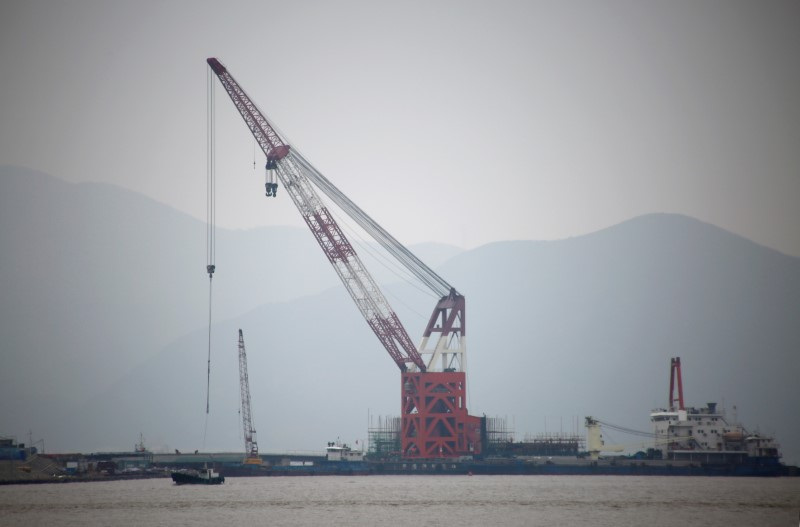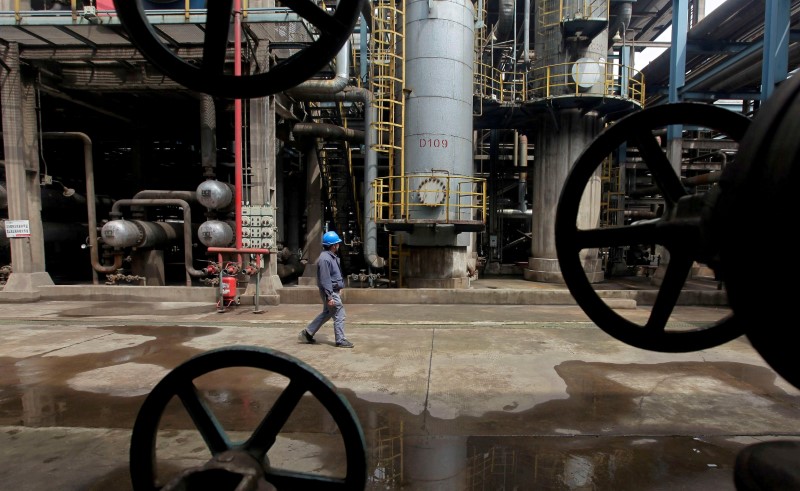By Clyde Russel
LAUNCESTON, Australia (Reuters) – Although imports fell to their lowest in almost two years in July, China continued to increase inventories in July, while refinery throughput fell for a fourth month.
China, the world’s biggest oil importer, added about 280,000 barrels per day (bpd) of commercial or strategic supplies in July, according to calculations based on official data.
This was a sharp decline from June’s increase of 1.48 million barrels per day, but still seems bearish when you consider the fact that crude oil imports in July fell to their lowest level since September 2022.
China does not disclose the volumes of crude oil flowing into or out of strategic and commercial reserves, but an estimate can be made by subtracting the amount of crude oil processed from the total amount of crude oil available from imports and domestic production.
China’s refineries processed 59.06 million tons of crude oil in July, equivalent to about 13.91 million barrels per day, according to data released Thursday by the National Bureau of Statistics.
This was 6.1% lower than the same month last year and was the weakest month on a barrel per day basis since October 2022.
Crude oil imports in July were 9.97 million barrels per day and domestic production 4.22 million barrels per day, given a total of 14.19 million barrels per day available to refineries.
If we subtract the processed volume of 13.91 million barrels per day, this leaves a surplus of 280,000 barrels per day.
During the first seven months of the year, China’s crude oil surplus was 800,000 barrels per day.
Oil imports from January to July were 10.89 million barrels per day and domestic production 4.28 million barrels per day, leaving a total of 15.17 million barrels per day available to refineries, of which they supplied 14.37 million barrels processed per day.
The overall picture that emerges from China’s crude oil imports and refinery processing is that the country’s oil sector is unapologetically weak.
Imports are trending weaker, as are refinery throughput, allowing inventories to continue growing.
OPTIONS
The addition of more crude oil to storage will also give Chinese refiners the opportunity to further restrict imports if crude oil prices start to rise again in the event of an escalation in geopolitical tensions, faster demand growth in the rest of the world or a further tightening of supply by the OPEC+ group.
Of the three factors mentioned above that could increase oil prices, the risk of worsening the situation in the current conflicts in the Middle East and Russia-Ukraine is the most realistic.
Demand growth around the world remains subdued and OPEC+ is still poised to withdraw some of its production cuts from October, although the group has said it may reverse this decision if market conditions are not as expected.
There are already some signs that OPEC+ is reevaluating its bullish forecast for Chinese demand growth in 2024, with the Organization of the Petroleum Exporting Countries (OPEC), which together with allies including Russia make up the OPEC+ group, taking a implements small cuts in its oil-exporting countries. Estimation of Chinese demand in its latest monthly report.
OPEC expects Chinese oil demand to rise by 700,000 barrels per day in 2024, accounting for a third of the global increase. The August forecast for Chinese demand growth is just 60,000 barrels per day below OPEC’s previous estimate.
With crude imports and refinery processing having contracted so far this year, it is difficult to see how a recovery could be strong enough to meet the OPEC forecast, which remains unchanged despite the small downgrade is strong.
The International Energy Agency (IEA) is more cautious about Chinese demand growth, saying it will account for about a third of the global total of 950,000 barrels per day by 2024.

This means that the IEA expects Chinese oil demand to reach around 313,500 barrels per day in 2024, which also seems optimistic given the data for the first seven months of the year.
The opinions expressed here are those of the author, a columnist for Reuters.


